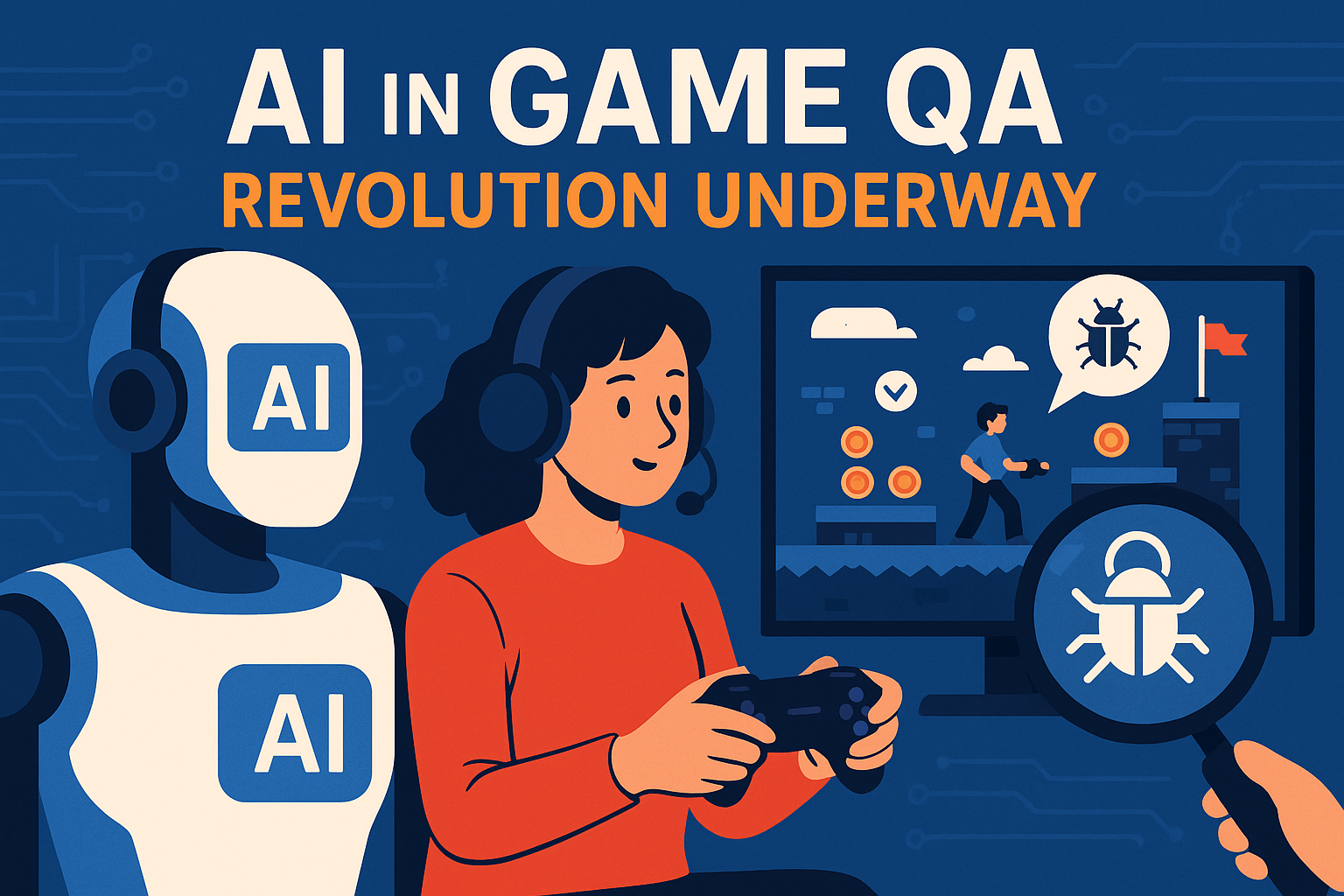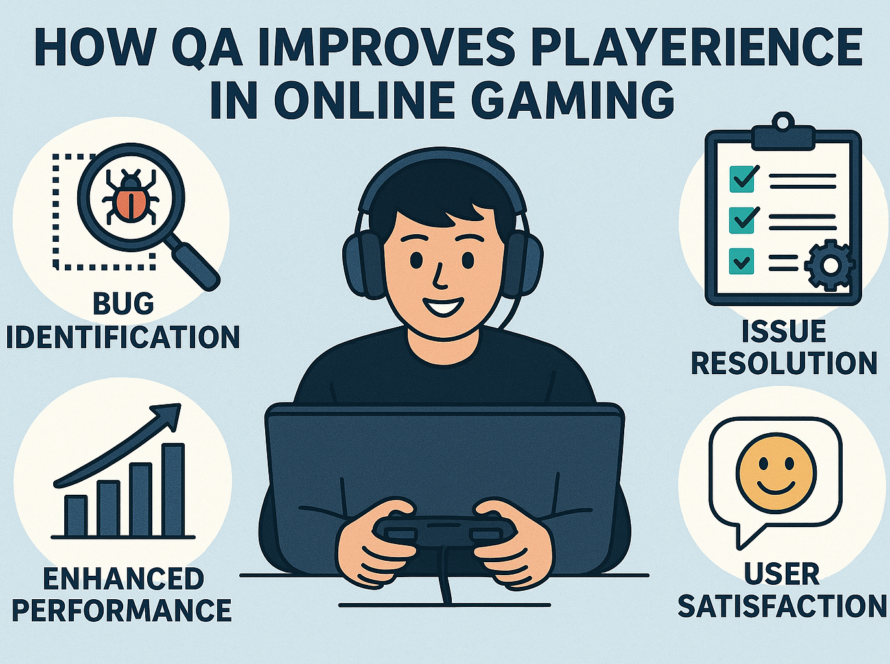Introduction: Game QA Needs to Evolve
Game development is rapidly advancing with rising player expectations. They want smooth gameplay, no bugs, and a polished experience from day one. Traditional quality assurance methods that rely heavily on manual testing are struggling to keep up. That’s where the role of AI in modern Game QA becomes critical. AI introduces speed, accuracy, and scalability that manual efforts alone cannot match. It’s transforming how games are tested and released in today’s high-pressure gaming landscape.
Also read: Gaming Platform Security Audits: What to Expect
What Is AI-Based Game QA
AI-based Game QA refers to the use of artificial intelligence tools and techniques like machine learning, automation, and data analysis to enhance the testing process. Instead of repeating manual tasks, AI automates test execution, predicts bugs before they appear, and learns from past issues. It shifts QA from reactive to proactive, saving time and boosting quality.
Automated Testing for Efficiency
AI allows for large-scale test automation where bots run thousands of scenarios faster than human testers. These include gameplay mechanics, in-game purchases, menu navigation, and performance under load. This helps developers catch bugs early, reduce human error, and release updates faster. Repetitive tasks like regression testing after updates are handled by AI almost instantly, which would otherwise take days manually.
Predictive Bug Detection and Risk Focus
AI analyzes data from past builds and player sessions to predict which areas of the game are most likely to break. For example, if collision systems or multiplayer lobbies have been prone to bugs before, AI automatically flags these for priority testing. It can also classify bugs by severity, helping teams fix game-breaking issues first. This targeted approach leads to more stable releases and efficient resource use.
Performance Testing Across Devices
AI tools monitor game performance across multiple devices and settings. It checks for battery consumption, heating issues, frame drops, and memory usage. Whether it’s a flagship phone, mid-range Android, or older console, AI can simulate gameplay and report performance gaps. This helps developers optimize for a wide audience without needing physical access to every device combination.
UI and Compatibility Testing
Modern games must work flawlessly across different screen sizes, resolutions, operating systems, and control schemes. AI ensures the user interface adapts well by detecting layout shifts, overlapping elements, or missing components. AI can scan hundreds of screen configurations rapidly, saving designers hours of manual UI testing.
Understanding Player Behavior with AI
AI also tracks how real users play the game. It analyzes actions like quitting after certain levels, skipping cutscenes, or repeatedly failing missions. This reveals friction points that affect user experience. Developers can then redesign levels, improve tutorials, or rebalance difficulty based on this data. The role of AI in modern Game QA here shifts from just fixing bugs to improving overall game design and engagement.
Testing Dialogue, Storylines, and Localization
AI with natural language processing can validate in-game text for grammar, logic, and translation errors. In story-driven games, AI tests whether dialogues flow correctly based on player choices. It ensures language support is consistent and free of cultural mistakes, which is crucial for global releases.
Continuous QA in Live Environments
Live-service games need constant updates and patches. With AI integrated into CI/CD pipelines, every new build can be tested automatically. AI performs regression checks, compatibility tests, and stability checks, providing QA feedback within minutes. This enables teams to push updates frequently without compromising quality.
Limits of AI in Game QA
AI is powerful but not perfect. It cannot understand emotional tone, humor, or creative intent. Human testers are still required to evaluate artistic quality, story depth, and immersive feel. Also, improperly trained AI may miss edge-case bugs or produce false positives. Therefore, a hybrid model where AI handles automation and humans handle experience-based testing works best.
The Future of The Role of AI in Modern Game QA
The role of AI in modern Game QA will grow with advancements in neural networks, generative AI, and real-time analytics. AI will not only test but also suggest fixes, generate new test cases, and support developers during development. As the industry shifts to bigger worlds, live updates, and cross-platform gameplay, AI will be central to delivering flawless experiences.
Conclusion
The role of AI in modern Game QA is to support faster releases, deeper testing, and smarter insights. From bug prediction to performance optimization, AI improves the speed and accuracy of game testing. It reduces manual workload and helps build games that are not only bug-free but more enjoyable. As the gaming industry evolves, integrating AI into the QA workflow is no longer optional—it’s the future.




